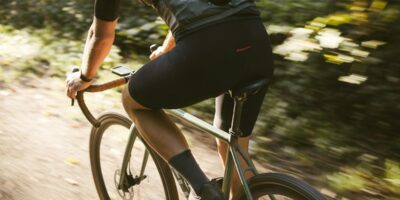Best MTB Pedals
Mountain biking requires reliable and versatile pedals. Getting the right ones enhances your performance and ensures safety. Let’s explore some of the best MTB pedals available today.
Platform Pedals
Race Face Chester
Race Face Chester pedals are a popular choice among mountain bikers. They offer a large platform with ten replaceable steel pins per side for optimal grip. These pedals are incredibly durable, thanks to their nylon composite construction.
OneUp Components Composite
OneUp Components Composite pedals strike a balance between price and performance. They feature a large platform, subtle concave shape, and grip galore with ten pins on each side. The robust composite body and reliable sealed bearings make them a great entry-level option.
Crankbrothers Stamp 3
Crankbrothers Stamp 3 pedals come in two sizes to cater to different foot sizes. They use premium bearings and traction pins to hold your feet in place. The concave design and thin profile increase foot stability, especially during aggressive rides.
Clipless Pedals
Shimano XT PD-M8000
Shimano XT PD-M8000 pedals are top-notch for serious riders. These SPDs provide a solid connection with the shoe for efficient power transfer. They have a wide contact area and adjustable entry and release tension for a customized fit. Robust and reliable, they’re built to withstand rugged conditions.
Crankbrothers Mallet E
Crankbrothers Mallet E pedals feature a hybrid platform and clipless design. This combination provides the stability of platforms with the efficiency of clipless. The large platform and adjustable pins add support, while the four-sided entry ensures easy clipping in all conditions.
HT Components T1
HT Components T1 pedals are known for their lightweight build and excellent engagement. They use a tension system that is easy to adjust, catering to personal preference. The robust aluminum body and grip ensure durability and secure footing.
Hybrid Pedals
Shimano PD-EH500
Shimano PD-EH500 pedals offer the best of both worlds. One side is SPD for clipless efficiency, and the other is platform for casual riding. Ideal for riders who switch between different styles, they feature a light-action binding for easy entry and release.
Crankbrothers Double Shot 3
Crankbrothers Double Shot 3 pedals blend clipless functionality with platform practicality. They have an aggressive traction pad and pins for notable grip. The dual-sided entry system ensures flexibility and ease of use.
VP Components VP-Vice
VP Components VP-Vice pedals are versatile and durable. One side is clipless for performance, while the other is a large platform with replaceable pins. They are particularly useful for riders who need to adapt to multiple biking situations.
Considerations When Choosing MTB Pedals
Type of Riding
Your riding style influences the type of pedals you need. Aggressive downhill riders may prefer platforms for quick foot placement. Cross-country bikers often opt for clipless for better pedaling efficiency.
Shoe Compatibility
Ensure your shoes match the pedals. Clipless pedals require compatible cleats. Platform pedals fit most shoes but work better with those featuring a stiff sole for better power transfer.
Material and Durability
Material affects weight and durability. Aluminum pedals are strong and long-lasting but can be heavier. Composite pedals are lighter and often more affordable but may wear out faster.
Adjustability
Pedals with adjustable tension allow for a tailored fit. This feature is crucial for clipless pedals to ensure the right balance between secure grip and ease of release.
Maintenance
Regular maintenance extends the life of your pedals. Consider pedals with easily replaceable components such as pins or bearings. Some models offer sealed bearings for better protection against dirt and water.
Weight
Weight matters mainly in competitive riding. Lighter pedals can enhance performance. However, prioritize durability and functionality over weight for recreational use and rugged terrains.
Top MTB Pedal Trends
Enhanced Grip Designs
Manufacturers continually innovate with pin placements and platform shapes to provide better grip. Concave designs and adjustable pins are becoming the norm, guaranteeing better foot stability.
Hybrid Versatility
Combining platform and clipless designs caters to diverse riding situations. Hybrid pedals are gaining popularity among bikers seeking versatility without compromising performance.
Materials Innovation
New materials like high-strength composites and titanium are being used to improve strength and reduce weight. These materials offer better performance while maintaining durability.
Customization Options
Pedals now offer a range of customizable features. From adjustable pin heights to tension control in clipless models, bikers can tailor their pedals to their specific needs.
How to Install MTB Pedals
Tools Required
- Pedal wrench or Allen key
- Grease
Steps
- Identify the left and right pedals. They are usually marked with an L or R on the spindle.
- Apply a small amount of grease to the pedal threads to prevent seizing.
- Thread the right pedal into the right crank arm clockwise. Use a pedal wrench or Allen key to tighten.
- Thread the left pedal into the left crank arm counterclockwise. Tighten it securely.
- Recheck the pedals after a short ride to ensure they remain tight.
Maintaining Your MTB Pedals
Regular Cleaning
Clean your pedals after each ride, especially after muddy trails. Use a brush to remove dirt and debris, and rinse with water.
Inspection
Regularly inspect your pedals for signs of wear. Check for loose or missing pins and ensure the bearings are smooth. Replace damaged components promptly.
Lubrication
Grease the spindle threads during installation and periodically. For clipless pedals, lubricate the cleat mechanism to ensure smooth engagement.
Bearing Maintenance
Check the bearings and replace them if they feel gritty or rough. Some pedals have sealed bearings that require less frequent maintenance.
Storing Your Bike
Store your bike in a dry, sheltered place to prevent rust and damage to the pedals. Use bike covers if storing outside.
Recommended Cycling Gear
Garmin Edge 1040 GPS Bike Computer – $549.00
Premium GPS with advanced navigation.
Park Tool Bicycle Repair Stand – $259.95
Professional-grade home mechanic stand.
As an Amazon Associate, we earn from qualifying purchases.




Subscribe for Updates
Get the latest articles delivered to your inbox.
We respect your privacy. Unsubscribe anytime.